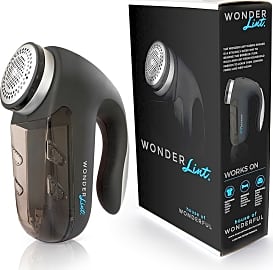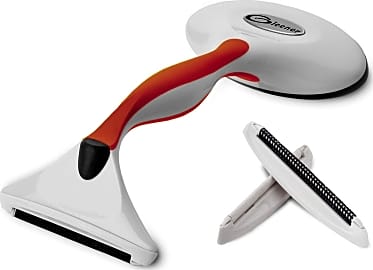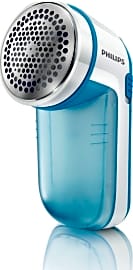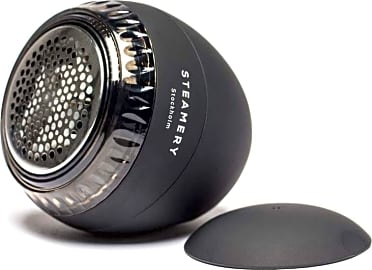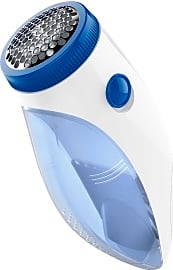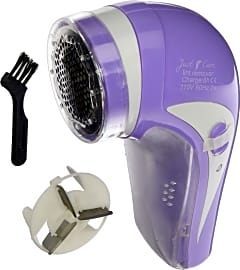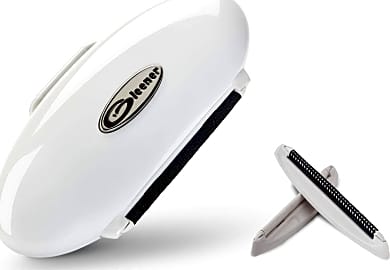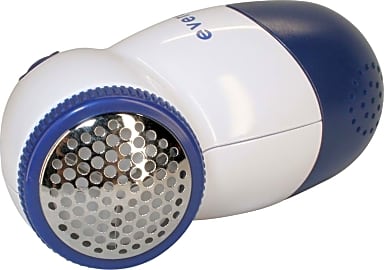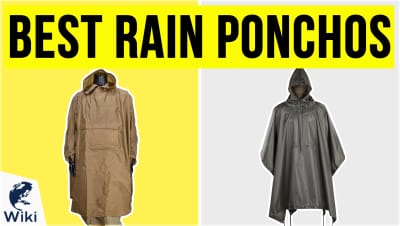The 10 Best Fabric Shavers

This wiki has been updated 38 times since it was first published in March of 2016. Are your sweaters starting to look a bit fuzzy? Got those annoying pills appearing on your shirts and blouses? There's no need to splash out on a new wardrobe; simply run one of these fabric shavers over your clothes to help them look like new again. They also work great on upholstery, drapes, blankets, and carpets. We have included both electric and manual models for you to choose from. When users buy our independently chosen editorial picks, we may earn commissions to help fund the Wiki.
Editor's Notes
August 13, 2020:
For those tackling various types of garments, the Conair Defuzzer and the House of Wonderful Wonder Lint remain strong choices. We especially like that the former comes in several options, including rechargeable and travel-sized versions, so it's a perfect choice for those who are always on the go. It, or perhaps the Gleener Ultimate Fuzz Remover, would make an excellent addition to a travel iron for those who need to look their best everywhere, from the boardroom to the bar. Another handy choice is the Beautural Home-Edition, an updated version of the 1byOne Beautural. The Home Edition runs on batteries or while plugged in, a feature not found on many other choices.
As for new additions, we've selected the Steamery Pilo, which has the distinction of having made the list of Oprah's Favorite Things. It's quite pricey, but it offers an interesting dome-shaped design that's just as comfortable in the hand as it is sleek. It's also rechargeable, which will save you money on batteries in the long run. If you're looking for a rechargeable model, but don't want to spend quite so much, look to the Just-F-Care Rechargeable, instead.
April 26, 2019:
When it comes to powerful fabric shavers that are simple to use, we still think it's hard to beat the House of Wonderful Wonder Lint and the Conair Defuzzer. The former doesn't offer adjustability like the latter does, but it also doesn't eat through batteries quite as quickly, so you'll have to decide whether you'd prefer more power or greater precision. If you're on an incredibly tight budget, you might look at the Evercare Shaver instead, although it takes a delicate touch — if you're too rough or tilt it too much, it can damage delicate fabrics. For those who prefer manual options, we like two models from Gleener, the Ultimate Fuzz Remover and the On the Go. Both work well, but be forewarned that they do require effort and time, so they're not for the impatient. Finally, we removed the Sunbeam S20 Deluxe due to availability issues; the 1byOne Beautural offers comparable adjustability.
What Is A Fabric Shaver And Who Needs One?
A fabric shaver can encourage one to not toss out their old clothing too quickly.
A fabric shaver works much like an electric razor with a round, rotating head. It has a spinning blade and a guard that keeps the shaver from actually cutting into the fabric. Its precise depth of cutting can remove those tiny balls of fuzz often called pills that form on old sweaters, couches, and other fabric-covered items. A fabric shaver sends the pills it picks up into a built-in compartment that one can remove and empty out when it's full. Fabric shavers can make worn out clothes look brand new, and feel completely smooth again, void of any annoying pills.
It's not uncommon for someone to throw away an item of clothing the moment it begins to pill. Pilled clothing can look dull, and even messy. But considering that Americans throw away around 10.5 million tonnes of clothing a year, unwanted clothes are cluttering our landfills and also costing individuals a large amount of money. One must find ways to hold onto their clothes, or at least make them presentable enough to donate. A fabric shaver can encourage one to not toss out their old clothing too quickly.
Some confuse linting and pilling, and so they believe that their drying machine will just remove the little fuzz balls formed on their clothing. But pills are actually much more difficult to remove than lint, and will usually still remain on an item after it has gone through the cycle. Pills require a more aggressive tool, like a fabric shaver.
The Various Features Of Fabric Shavers
Various textiles have different properties, and knitted clothing tends to be the most prone to pilling. However, thin, more delicate fabrics, like cotton, can also pill. The thickness of the clothing one is shaving will determine which fabric shaver is appropriate. Heavy-duty ones can remove extremely stubborn pilling from thick fabrics, but they may cut through thinner items. Those removing pills from more delicate fabric should look for a lightweight fabric shaver, so they can better control the pressure.
The thickness of the clothing one is shaving will determine which fabric shaver is appropriate.
Those who will put their fabric shaver through a lot of use should look for one with a large pill cup, eliminating the need to stop and empty it out often. Fabric shavers can be especially useful to parents too. Parents already spend a tremendous amount of money on kids clothes since they regularly grow out of them. Throwing out clothing that has pilled shouldn't be an additional reason one must refresh their child's wardrobe. That being said, one should make sure their fabric shaver has automatic safety protection if it will be around kids.
The higher the rotations per minute the blade is capable of, the quicker the fabric shaver will remove lint and pills from the item. Like shavers made for the body, fabric shavers can also have an adjustable distance control that allows one to decide how much pilling or lint they should remove. Since this is an electronic device, one should make sure their fabric shaver has an ergonomic and non-slip grip, so they do not lose control of it while it is active. Those purchasing a fabric shaver to travel with should look for one that is compact and battery-operated, so it will fit in their carry-on, and can be used anywhere.
Why Pilling Occurs
Pilling occurs when an area of fabric is regularly rubbed against, usually by something rougher in texture. The most common parts of clothing to pill are those that suffer the most abrasion, such as the seat of the pants, the armpits, and the collar. Because these regularly come into contact with, and rub against, other items, like overcoats or chairs, little groups of broken fabric on their surface get the chance to tangle together and form pills. Women may notice that after carrying a clutch purse under their arm, the fabric against which the purse rested has begun to pill. This is another source of abrasion.
One should also turn delicate items inside out before washing them, to reduce abrasion on the outer surface of the clothing.
Synthetic fibers, while more resilient than natural ones, are the most prone to pilling. These include fabrics like nylon and polyester. Pilling is a major issue with workout clothing, because items like yoga pants and sports bras are usually made from synthetic fibers in order to withstand the rigorous activities one puts them through. Those same activities, however, create abrasion on clothing. Sitting on rough surfaces in workout pants, holding weights against one's body, or simply rubbing one's thighs against each other while running can lead to pilling.
When clothes go into the washer and dryer, they naturally rub up against one another. People should wash fabrics that are prone to pilling on a gentle cycle. Delicate fabrics should not be washed in the same cycle as tougher items like jeans. One should also turn delicate items inside out before washing them, to reduce abrasion on the outer surface of the clothing. Choosing a detergent with the enzyme cellulase can also help break down pills and remove them from clothing.



